Indigenous group vs commercial fishers
The ongoing dispute between Indigenous fishers and local commercial lobster fishers entered a new and violent chapter on the weekend.
A lobster pound where Indigenous had stored their catch was burned in a suspicious fire, and one man, police call a “person of interest” is in hospital with life threatening injuries.
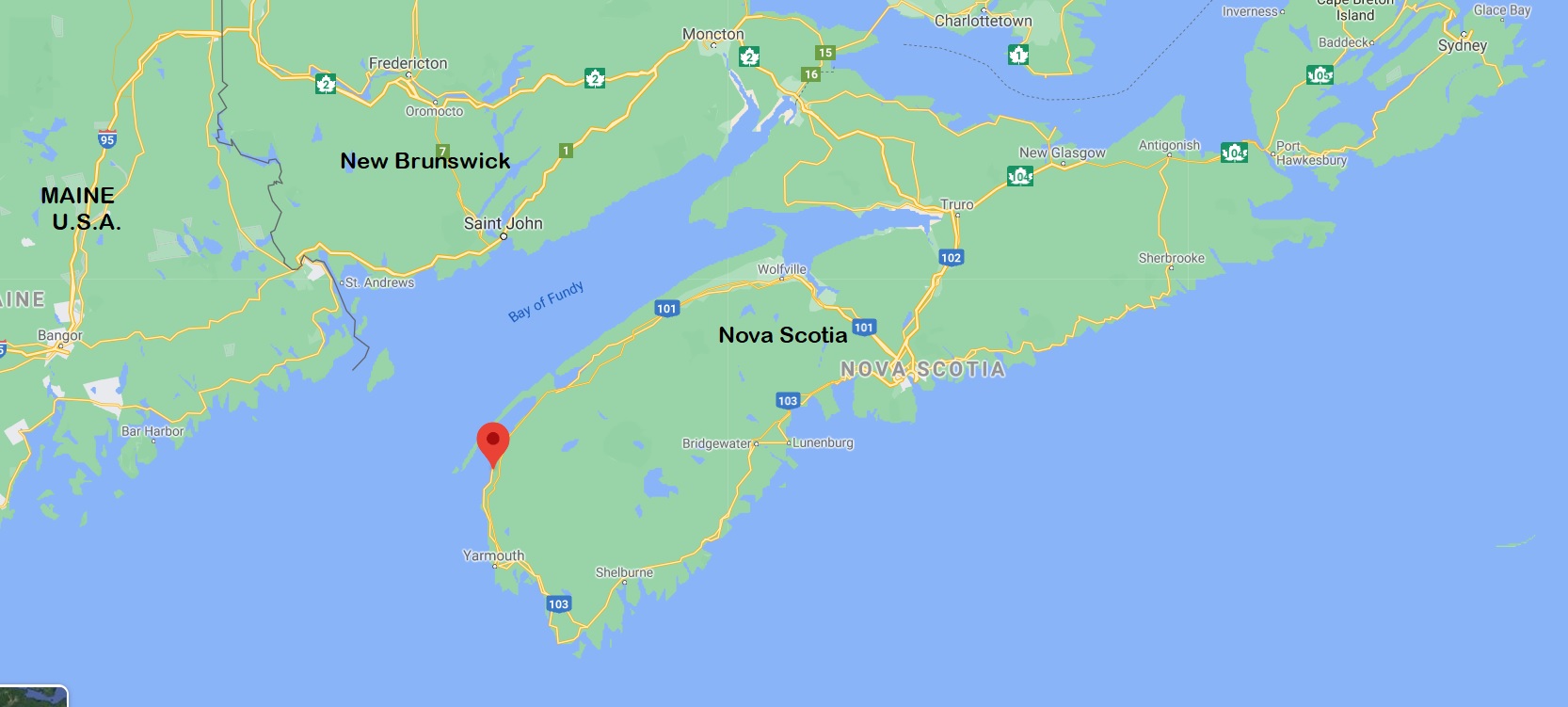
The dispute over fishing rights has been on and off over two decades. Red balloon indicates Saulnierville and nearby Weymouth on St Mary’s Bay, N.S. where the latest flare up is occurring, part of the federally regulated lobster fishing area 34 ( google)
This comes after weeks of protests and altercations between the two groups. It comes as the Indigenous Mi’kmaw started their own ‘regulated’ commercial lobster fishery although the federally regulated season is closed. Local commercial fishers say this ‘fishing out of season’ will harm the stocks pointing out the reason the fishery is closed at this time is because this is when lobster mate and molt, producing new shells and is a necessary conservation policy.
The disputed lobster fishing area 34 is the largest lobster fishing area in Canada. Statistics show the catch n the disputed St Mary’s Bay area has decreased 46 per cent from the 2016-2017 season. The commercial fishers claim it’s because of Indigenous fishing during the closed season.
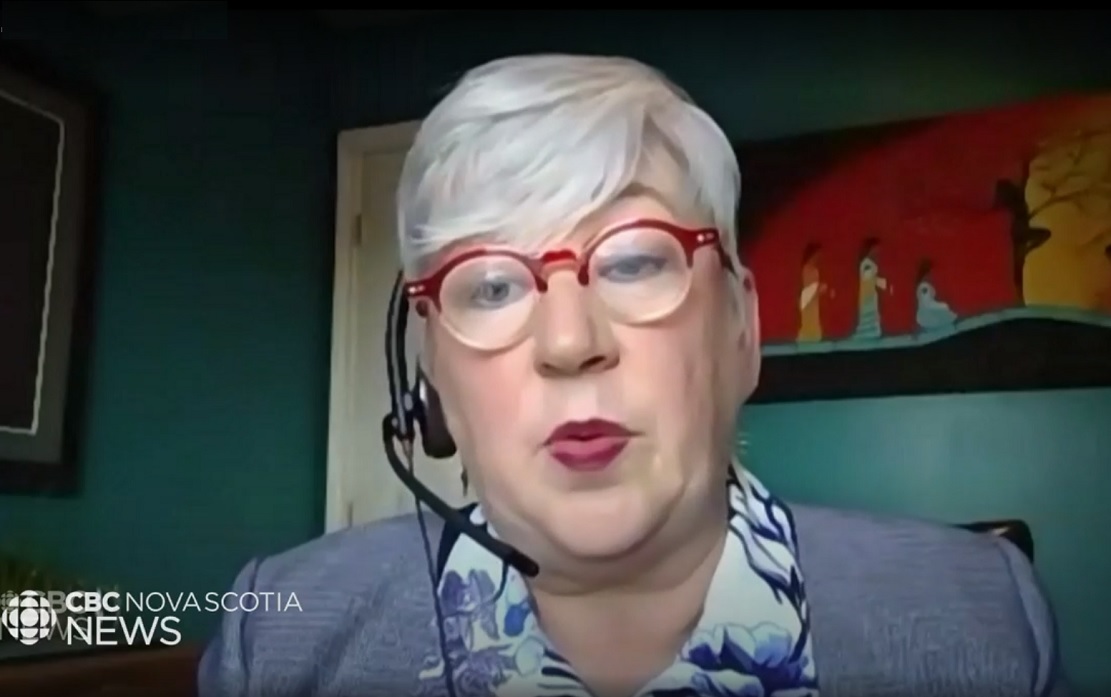
Fisheries Minister Bernadette Jordan said in a recent CBC interview that it is not appropriate to have commercial fishers involved in “nation to nation” talks between the federal government and Mi’kMaw, adding that she has however ongoing conversations with the non native fishers. She and federal government have come under criitism from all sides saying a multi-year long lack of action is what has led to the conflict. (CBC News)
The Department of Fisheries and Oceans says the average decrease in the enitre LFA34 over the period is six per cent but adds the St. Mary’s Bay situation is “not dissimilar to that observed in others areas of Lobster Fishing Area 34 during the same period.”
Colin Sproul of the Bay of Fundy Inshore Fishermen’s Association however says he had information from the 2019-2020 season from the federal government and the catch in St Mary’s Bay is down 68 per cent over three years. DFO told CBC news they would not provide information from St Mary’s Bay as all the log books have not been received from commercial fishermen.
Accusations have been made on both sides against each other and against the police. The commercial fishers are upset saying the police are not enforcing the law (closed season) while the Mi’kmaw say the police are not protecting them from threats and violent acts.
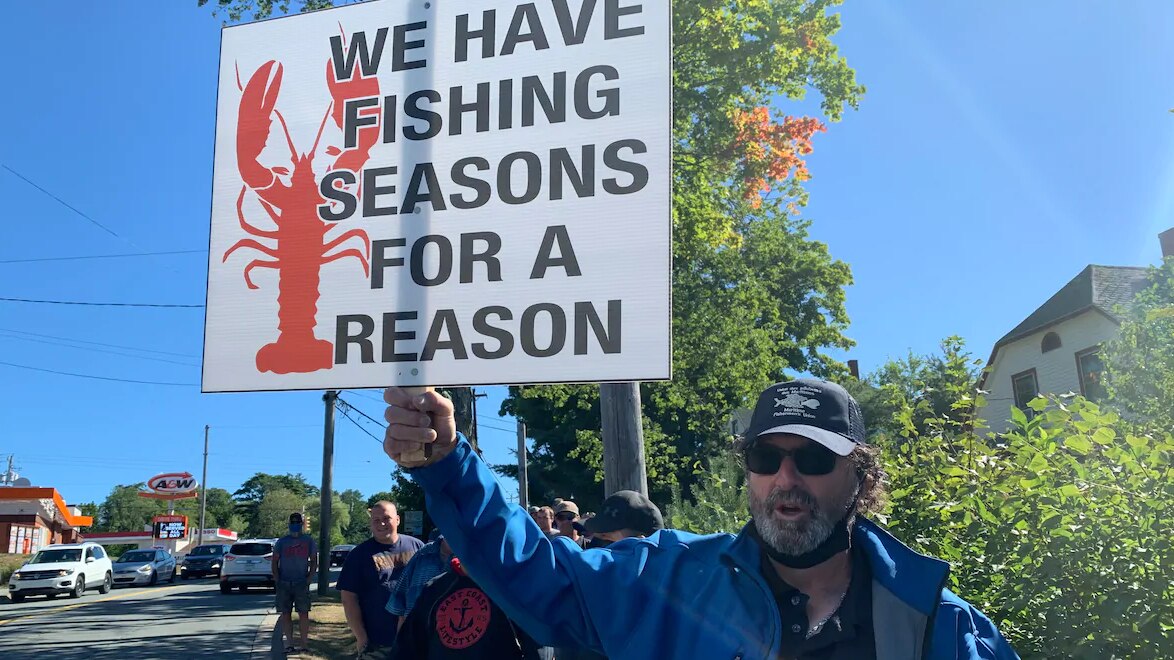
An angry but relatively peaceful protest earlier his month of commercial fishermen who have been demanding that the federal government stop the Mi’kmaw from commercial harvest and sale lobster outside the commercial season, which is closed for conservation reasons (Paul Withers/CBC)
The Mi’kmaw say the Supreme Court of Canada (1999) showed they have a right to a “moderate livelihood” from fishing, but because that’s never been defined, it’s become a point of contention. A later SCC decision said the government could pose restrictions on that right, such as for conservation reasons, but should justify it.
Discussions on the situation have taken place, but the federal government and Mi’kmaw have excluded the commercial fishers. Sipekne’katik First Nation Chief Mike Sack ,quoted by CTV said, “We’re not negotiating with them, we’re discussing our management plan with them,”
Indigenous Services Minister Mark Miller said those discussions are ‘nation to nation’ talks and discussions with commercial fishers will happen separately.
- RCI: Sep 18/29: Lobster dispute between Indigenous and commercial fishers boils over, again
- RCI: Sep22/20: Lobster dispute between Indigenous and commercial fishers still boils in N.S.
As a result of the increased tensions over the last two weeks and especially the weekend fire, several politicians have now called for an emergency debate in Parliament and more police have been assigned to the area.
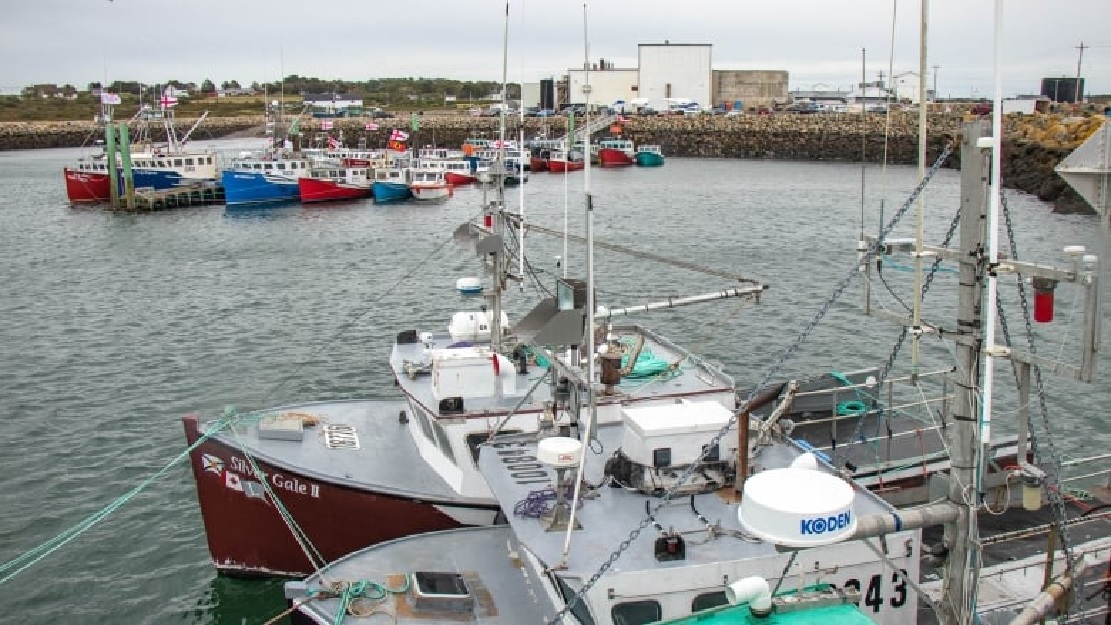
Sipekne’katik First Nation fishing boats tied up at Saulnierville wharf on Sept. 22, 2020. The Mi’kmaw have started their own regulated commercial fishery outside of the federally regulated one. (Robert Short/CBC)
The head of the commercial fishers, Joel Comeau stepped down on Friday as president of the Maritime Fishermen’s Union Local 9 in Nova Scotia saying he no longer felt safe, He told CBC radio that the he was concerned for his own and his family’s safety and the verbal and possible physical attacks were too much. “After four years of working on this file and fighting for the fishermen and fighting with [Department of Fisheries and Oceans], I decided that it was too much of a toll on my family. We’ve been followed around the community”
Chief Sack quoted by the Canadian Press was also upset, blaming the commercial fishers for “taking the law into their own hands” adding more than police are needed, “They’re doing whatever they want and getting away with it. We need the military to come step in to keep the peace.”
Bernie Berry is president of the 1,000 member Coldwater Lobster Association. Quoted by the Canadian Press, he said “To date, there have been no meaningful face-to-face negotiations with fishing organizations representing licensed fishers,” said Berry. “Unless this happens, anger and frustration on both sides will continue to run high”.
In Ottawa, Parliamentary speaker Anthony Rota will decide whether requests for an emergency debate on the situation will proceed
Additional information-sources
- CBC: R.Patel: Oct 18/20: NDP, Liberal cabinet ministers call for emergency debate over mounting N.S. fishery dispute.
- CBC radio: Oct 16.20: N.S fisherman’s union head quits-says lobster dispute is too much of a toll on his family (transcript of interview)
- CBC: P Withers: Oct 6/20: The lobster catch in St Mary’s Bay is down, but there’s little concensus on why
- Canadian Press (CTV): B.Bundale: oct 17/20: N.S. First Nations chief calls for military support after lobster pound fire
- Halifax Chronicle Herald: Beswicke/Cooke: Oct 18/20: Man in hospital after overnight fire destroys Middle West Pubnico lobster pound
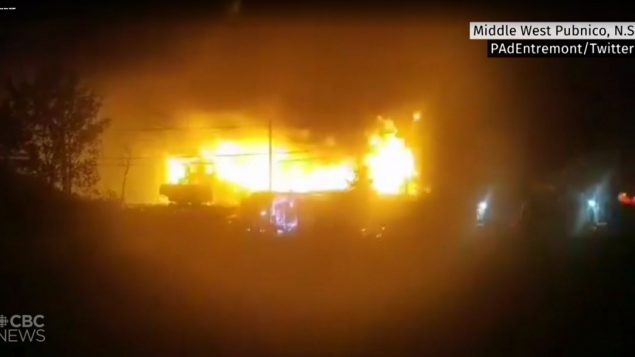






For reasons beyond our control, and for an undetermined period of time, our comment section is now closed. However, our social networks remain open to your contributions.